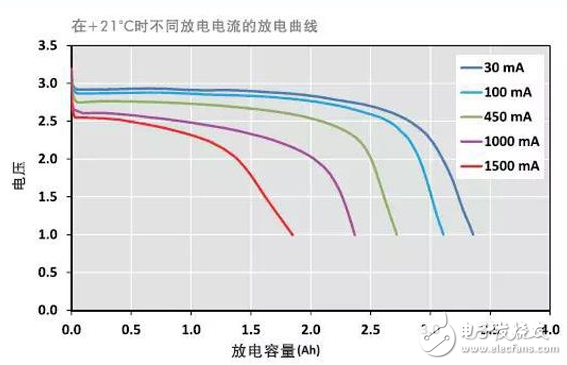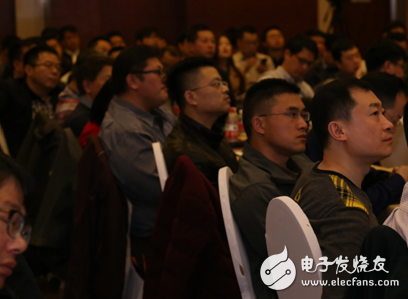On March 10th, 2017, China NB-IoT Industry Alliance teamed up with Huawei to hold NB-IoT hotspot technology seminar at Crowne Plaza Shanghai Century, which was suitable for various IoT vertical applications during the stage of large-scale deployment of NB-IoT network. The terminal of the field is placed in an important time window. Because everyone pays more attention to the design of the chip, the application of the module, the docking of the software platform, etc., there is a lack of professional accumulation in antenna performance and battery selection. Under the strong appeal of the industry, Huawei has promoted the alliance to organize this hot technical seminar, which is mainly from representatives of more than 100 enterprises such as antennas, batteries, chips, modules, water meters, gas meters, geomagnetism, wearables, and various terminals. Participate in discussions and exchanges. Concerns about antennas and batteries far exceed everyone's expectations. We hope that we can shorten the development cycle of terminal products and reduce the potential risks in the deployment process. At the early stage, we will let the antenna and battery manufacturers intervene to reduce everyone's Choose difficult.

Dr. Qi Zhifeng, deputy general manager of Huawei's cellular IoT product line, analyzed the advantages, application scenarios and development trends of NB-IoT technology. NB-IoT has become a common development trend of the global industry chain. Huawei has been committed to international standards. Advancement, construction of open laboratories, maintenance and support of ecological chains, etc., aim to promote the creation of a cooperative and win-win ecological chain. Mr. Sun Yanming, Director of Mobile Communication Market, explained the key points of how the module pays attention to the antenna and battery during the design process. Ms. Huang Wei, General Manager of Shanghai Unicom Internet of Things Center, NB-IoT Network and Joint Lab Action Plan, Galaxy Highlights Mr. Xu Guoxin, President, introduced the analysis of key points of NB-IoT RF and power consumption test.
Mr. Xie Yunzhou, Secretary General of China NB-IoT Industry Alliance, presided over the forum and explained how to use the advantages of NB-IoT technology to optimize the vertical application of the Internet of Things, which can not only achieve the refined management appeal for the owners, but also reach the users. The upgrade of the experience. In the development of NB-IoT terminal products, most companies focus on the design of chips, modules, software, protocols, etc., while ignoring the performance and deployment impact of end products such as antennas and batteries.
Antennas suitable for NB-IoT terminal products include PCB antennas, metal antennas, ceramic antennas, LDS antennas, whip antennas, etc. Each antenna has its own advantages and disadvantages. In the discussion and analysis of key points in antenna design, Huawei's Zhou Yingquan elaborated on the requirements of chips and terminals for antennas. The challenges of antenna design come from miniaturization, low cost, wide frequency band, multi-band, efficiency, and various terminal forms. Differentiate process forms, design options and material selection. Mr. Zhang Yuegang, the general manager of Jieshengkang Company, explained the type and characteristics of the antenna. He pointed out that the advantage of the spring type antenna is that the size space is small and the structure is varied; the advantages of the metal piece and the metal piece plus the bracket antenna are small space and stable structure; The advantage of the PCB+Cable antenna is that it is easy to assemble; the advantage of the FPCB+Cable line antenna is that the structure is free and easy to install. The advantage of the external antenna is that it is efficient and away from the motherboard.
Mr. Hu Li of Amphenol Company elaborated on the main points of antenna design. He pointed out that if the antenna clearance area is large, PWB antennas are preferred; when the antenna clearance is small and the height is limited, ceramic antennas can be considered; when there is no antenna clearance When the height of the antenna is allowed, metal shrapnel or LDS antenna may be considered; when the antenna clearance area and height are limited or there is a strong interference source, the FPC antenna is applied.
NB-IoT terminals come in various forms. For different application scenarios, terminal manufacturers need to select suitable antennas according to the scene. For example, water meters pay attention to corrosion resistance, gas meters pay attention to metal casing and pipeline shielding, and wearable devices pay attention to human body absorption radiation. Inefficient situation. The installation process of the fixed product has requirements for the direction of the antenna, such as the vertical horizontal installation of the meter and the upward and downward installation of the street lamp. In the design process, how to use the limited space to achieve higher efficiency. There is more to focus on how to test and test indicators, laboratory tests, off-site tests, live tests, power outage tests, and even metal batteries can also have an impact on antenna efficiency. The use of long-life batteries is different from ordinary batteries, and the working environment is often harsh, inconvenient to replace at any time, and the requirements and years of use are specified. In the discussion and analysis of the key points of battery selection, Huawei Zhao Na introduced the terminal's attention to the battery under different application scenarios, and analyzed the pulse current curve and power evaluation of the NB-IoT module.
TADIRAN battery Mr. Gan Wentao pointed out that wearable projects mostly use secondary lithium batteries, smart door locks mostly use dry batteries, and most outdoor IoT applications use disposable long-life lithium batteries. Lithium-manganese batteries are mainly used in areas where high and low temperatures are required, and there are certain requirements for life but not very strict, such as car remote controls. Lithium-ion batteries are mainly used in areas with high and low temperature requirements and strict requirements on life, such as remote meter reading, tracking projects, scientific research projects, military projects, etc. The energy type lithium sub-battery + composite capacitor overcomes the safety problems of the conventional lithium sub-battery, the problem of unsteady power, and the passivation problem.
Yiwei Lieneng Hu Guohua introduced the characteristics of various chemical system batteries, and proposed a lithium sub-capacity battery + lithium-ion battery capacitor solution suitable for smart meters.

The SAFT battery, Ms. Wang Limei, explained the voltage characteristics of the primary battery. Since the voltage required by the chip exceeds 3.0V, the battery range that can be selected becomes very limited, and the characteristics and parameters of different batteries are analyzed.

The battery discussion session is entering a white-hot state. Whether the battery can judge the remaining capacity of the battery makes the scene reach the climax of communication. There are still many topics of concern, including from the perspective of the battery field, how to choose the NB-IoT terminal. The battery has a 10-year service life, and the passivation phenomenon of the battery has passed the solution. Interestingly, the terminal manufacturer hopes to realize the judgment of the remaining battery capacity of the primary battery, so as to replace the battery before the battery failure, and the battery manufacturer said that it has been running for 100 years without any suitable algorithm and technology to provide accurate residual power. This makes the engineers who have done the mobile phone manufacturers instantly petrified.
The battery requirements of the NB-IoT terminal equipment are that the service life of the battery needs to be maintenance-free for at least 10 years, the voltage is above 3.1~3.3V, the quiescent current is 10uA, and the current has a pulse of 100~300mA.

The China NB-IoT Industry Alliance aims to bring together the strength of the NB-IoT industry chain, build a NB-IoT industry chain ecosystem, and lead alliance members to build a mature end-to-end industry chain to promote the rapid development and commercial deployment of the NB-IoT industry. Promote the development of alliance standards for different vertical application areas and incubate business models in new ecosystems.
Let NB-IoT technology leaders understand the appeal of vertical applications in the Internet of Things!
Let the innovative IoT industry truly grasp the unique charm of NB-IoT technology!
Union Mailbox:
Since AC power cord is output of high voltage electric power, there is a risk of electric shock injury, therefore, All the AC power cord must comply with safety standard to produce. AC (Alternating Current) Power cord is to transmit high voltage. It is used to drive machinery or home appliances.
AC Power cord,power cable, batter cable, power cord
ETOP WIREHARNESS LIMITED , https://www.oemwireharness.com